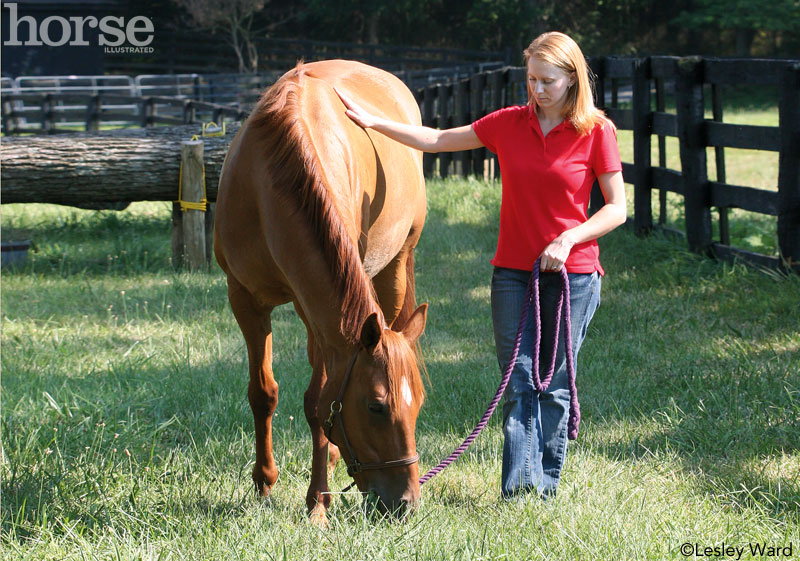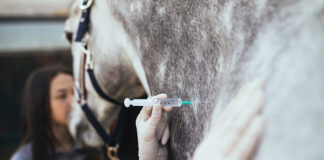Q: I have a 16-year-old mare that recently had colic surgery. She will be on stall rest for two months, with the exception of two 30-minute hand walks each day. How can I get her back into shape once she’s done recovering without rushing her and risking injury?

The initial stall rest minimizes the chances of your horse overstressing the incision and compromising its healing: A common complication is development of an incisional hernia, which could require more surgery to repair. Research has indicated that even at a year, in most cases the midline abdominal incision returns to only about 80 percent of its original strength.
The 30-minute hand-walking twice a day will help to reduce post-operative swelling, keep your mare limber, and maintain some muscle tone. After the initial rest and hand-walking for 60 days, you will likely be allowed to turn your horse out in a small paddock. Controlled exercise in-hand or under saddle will help to contain your horse’s enthusiasm. Controlled exercise is safer than allowing your horse to run free, where she could strain the midline incision that still needs healing time. Once you are given the go-ahead to begin riding her-usually at 90 days-you’ll shorten the walk periods to one 30-minute session under saddle. It is important to exercise her in this controlled fashion four to five days a week in order to progressively build her strength to carry tack and rider.
One helpful and easy-to-remember recommendation is to increase the exercise time by five minutes every five days. By about four months post-op, you can gradually increase the intensity, moving from strictly a walk to short periods of trotting (5 to 10 minutes) interspersed within the walking periods. You can double the trotting time each week, and substitute a bit of cantering (5 to 10 minutes) in her third week under saddle. If you think about how to prepare an unconditioned horse or one that has had an extended layup, then the same principles apply-slowly add in time at each gait to the exercise periods.
Your goal should be to achieve the same level of riding that you enjoyed prior to the colic event by about nine to 10 months following surgery.
This article originally appeared in the September 2014 issue of Horse Illustrated magazine. Click here to subscribe!







Sounds all too familiar!